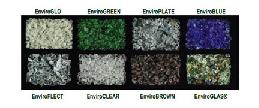
Located on the coast of Abu Dhabi, the Abu Dhabi Energy tower is stated to be constructed for the year 2045, ushering a new era of energy efficiency and ecological balance in high-rise buildings. Based on the principle of increasing efficiency for use of electricity, this building looks to utilize the electricity it receives from the power grid, to further generate power in the future.
Rather than depending on external sources of energy, such as solar or wind power, the building is designed to convert and utilize the existing power sources from the grid, in far more efficient manner than what exists in most buildings. While power grids work with high efficiency, the electricity they produce doesn’t always get utilized at different sources, resulting in loss of energy. At the same time, during periods of hyper activity within the building, the sources of power aren’t enough to meet all requirements. Hence, during the times of excess input, the building will use electricity to pump in water into tanks located at the base of the building. When the power supply decreases, the stored water will used to churn turbines which shall then help meet the energy requirements of the building. These tanks are located at the floor plates of the building, which expand and contract as per the demand for storage of water, which is also reused. In totality, the dependence on the ecological environment decreases due to higher efficiency of energy management.

Using this flexibility in design, the building becomes a model for self-sustainability and energy efficiency for the future. As
countries become more industrialized and the demand of power rises, the resources for generating the power are put under enormous strain. Having a model, such as this Energy Tower, the power requirements will be met more efficiently, and with result in lesser wastage of power resources. Though at conceptual stage currently, the questions looming at large, is generally concerning the overall stability of the building’s architecture. A successful completion of the project can only mean a demand for similar kinds of civil buildings, the world over especially in high energy consuming cities.
Via: Blake Bethards




